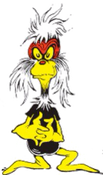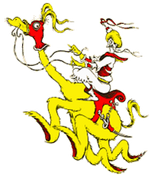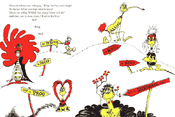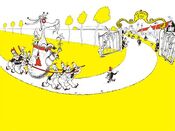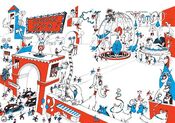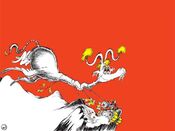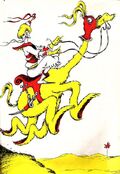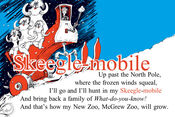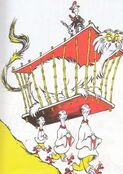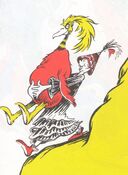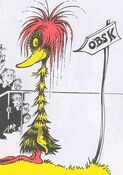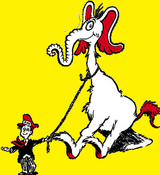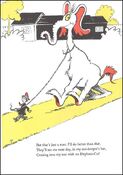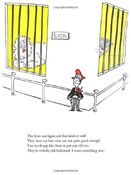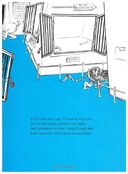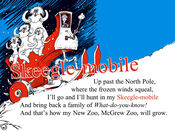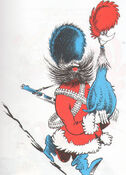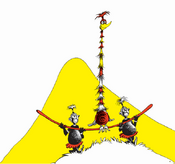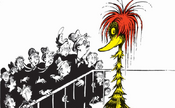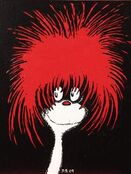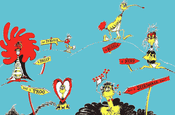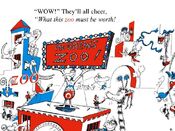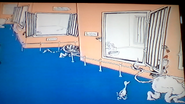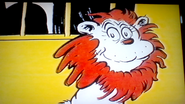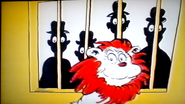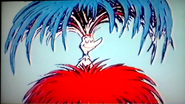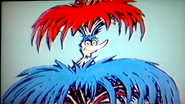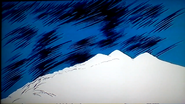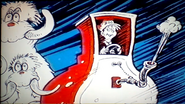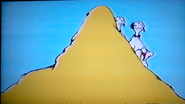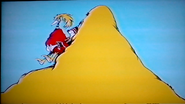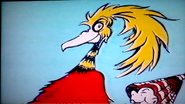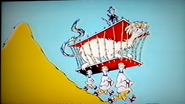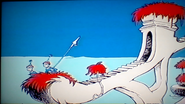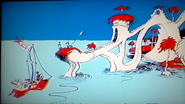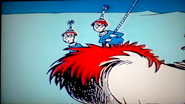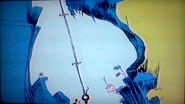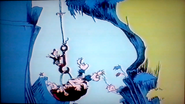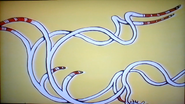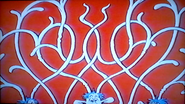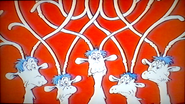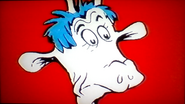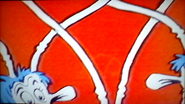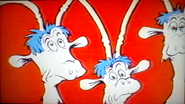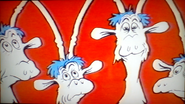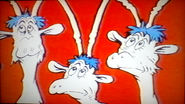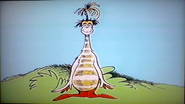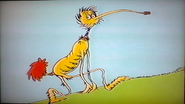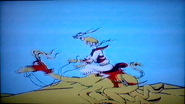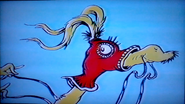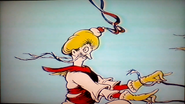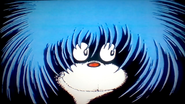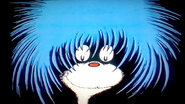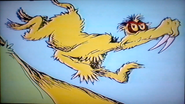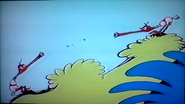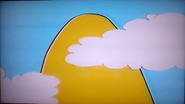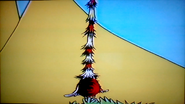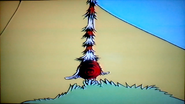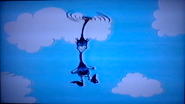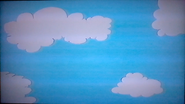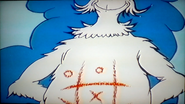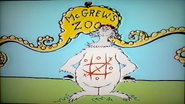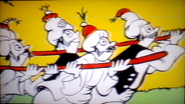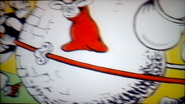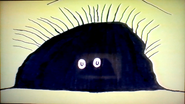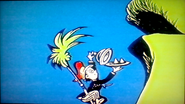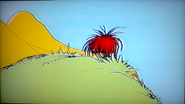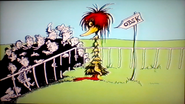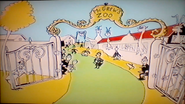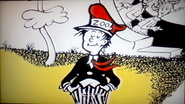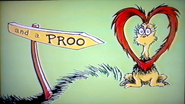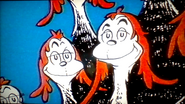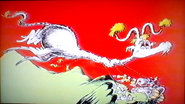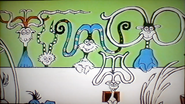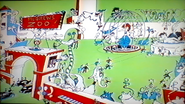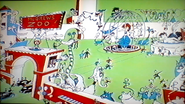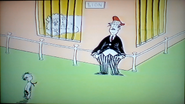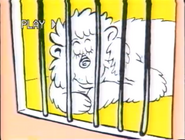Warning! This page contains content that can be seen as mature or inappropriate for younger audiences. Please continue at your own risk.

| |
| Published: | |
| Author: | Theodor Geisel |
| Illustrator: | {{{illustrator}}} |
| Characters: | {{{characters}}} |
| Setting: | {{{setting}}} |
If I Ran the Zoo is a book written by Dr. Seuss.
If I Ran the Zoo is a children's book written by Dr. Seuss in 1950. The book is written in anapestic tetrameter, Seuss's usual verse type, and illustrated in Seuss's trademark pen and ink style. The book is likely a tribute to a child's imagination, because it ends with a reminder that all of the extraordinary creatures exist only in McGrew's head. If I Ran the Zoo is often credited with the first printed modern English use of the word "nerd," in the sentence "And then, just to show them, I'll sail to Ka-Troo/And Bring Back an It-Kutch, a Preep, and a Proo,/A Nerkle, a Nerd, and a Seersucker too!" In the book, Gerald McGrew is a kid who, when visiting a zoo, finds that the exotic animals are "not good enough". He says that if he ran the zoo, he would let all of the current animals free and find new, more bizarre and exotic ones.
Throughout the book he lists these creatures, starting with a lion with ten feet and escalating to more imaginative (and imaginary) creatures, such as the Fizza-ma-Wizza-ma-Dill, "the world's biggest bird from the island of Gwark, who eats only pine trees, and spits out the bark." The illustrations also grow wilder as McGrew imagines going to increasingly remote and exotic habitats and capturing each fanciful creature, bringing them all back to a zoo now filled with his wild new animals. He also imagines the praise he receives from others, who are amazed at his "new Zoo, McGrew Zoo". Some of the animals featured in "If I Ran the Zoo" have been featured in a segment of The Hoober-Bloob Highway, a 1975 CBS TV Special. In this segment, Hoober-Bloob babies don't have to be human if they don't choose to be, so Mr. Hoober-Bloob shows them a variety of different animals, including ones from "If I Ran The Zoo", such as Obsks, Bippo-No-Bungus, a Tizzle-Topped Tufted Mazurka, the helicopter bug, the Chuggs, the hens that roost atop each other, and an Elephant-Cat.
This Book has been used for a Random House inc production entitled "Dr. Seuss Video Classics" Video series which also features How the Grinch Stole Christmas!
Oceanhouse Media published this book to be used as an app on Iphones, Ipod touch, Ipad and android apps.
Theme park attraction
"If I Ran the Zoo" Dr. Seuss's "If I Ran the Zoo" book is also the main theme for one of the children's play areas at Universal Studios' Islands of Adventure. The small play area is located inside the area of the park known as Seuss Landing, and is themed in the Seussean way Dr. Seuss is famous for.
This could be a reference to his father running the forest park zoo in his hometown, Springfield, Massachusetts.
If I Ran the Zoo (1992)
An animation short directed and produced by Ray Messecar and narrated by Bret Ambler.
List of Creatures
- Ten-footed Lion:
- New Sort-of-a-hens: Hens that roost in the top of each other's.
- Elephant Cat:
- What-do-you-know: A walrus-like creature from the North Pole.
- Bustard: A fluffy bird that lives in the Mountains of Zomba-ma-Tant. It only eats custard with sauce made of mustard.
- Flustard: A lion-like beast that lives in the Mountains of Zomba-ma-Tant. It only eats mustard with sauce made of custard.
- Joat: A goat-like animal that has cow-like feet, a squirrel-skin coat, sit like dogs and sound like goats, but can't sing high notes.
- Lunk: Creature that live in the wilds of Nuntucket.
- Deer-that-no-hunter-can-shoot: A tiny deer with long antlers that is described to be so cute that hunters wouldn't shoot it. It is also nice that if it weren't for the antlers, it could sleep in one's bed.
- Whose-horns-are-connected-from-one-to-the-other: A family of deer with horns connected to each other's.
- Scraggle-Foot Mulligatawny: A fast high-stepping animal from the Deserts of Zind. They are used as mounts by chieftains when they want to go fast to find a place to hide.
- Iota: A blue-haired animal from the far western part of southeast North Dakota and the northeastern west part of South Carolina.
- A Bad Animal,from Some Lands
- Thwerll: A bug who's legs are snarled up in a terrible snerl.
- Chug:
- Tizzle-Top-Tufted Mazurka: A long-necked canary from the African Island of Yurka. If it swallows an oat for breakfast on the first day of April, it has to go down for so long, it reaches its stomach on the fifteenth of May.
- Big Bug-who-is-very-surprising: A feller with a propeller on its head that can make cross-country hops from Texas to Boston with only two stops.
- Wild Tick-Tack-Toe: An ape-like creature that draws lines, circles for wins, and X's for loses on its stomach.
- Gusset:
- Gherkin:
- Gasket: A big-eared animal from Nantasket.
- Gootch:
- Natch: A creature that lives in a cave in Kartoom. It has lived in it for years that no one has ever captured it or make it come out. What is just to his taste is three chicken croquettes made of library paste, sprinkled with pickled and spiced peanut shucks, all baked at 600 degrees, then iced.
- Obsk: An odd "Thing-a-ma-Bobsk" bird from the Mountains of Tobsk, near the river of Nobsk. It eats rhubarb and "corn-on-the cobsk".
- Russian Palooski. A red haired, blue-bellied bird.
- It-Kutch:
- Preep:
- Proo:
- Nerkle: A scrawny creature from Ka-troo.
- Nerd:
- Seersucker:
- Wild Bippo-no-Bungus: A creature from the Jungles of Hippo-no-Hungus, Dippo-no-Dungus, and Nippo-no-Nungus. The ones from Hippo-no-Hungus are better and smarter that the latter two.
- Fizza-ma-Wizza-ma-Dill: The world's biggest bird from the island of Gwark. It eats pine trees and spits out the bark.

